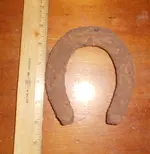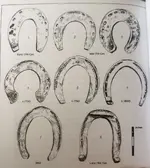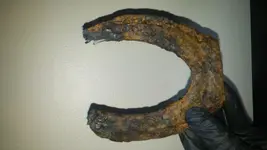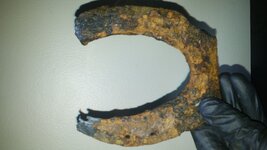BrandonMello
Greenie
- Mar 3, 2016
- 16
- 11
- Detector(s) used
- Tracker IV
- Primary Interest:
- All Treasure Hunting
Hey guys! I am new to metal detecting as well as this site but I am a man who loves to do his research. On this particular find I have done all of the research I can do and I am still stumped so I am hoping for some help:
Background:: The horseshoe was found in Seekonk, Massachusetts U.S.A . The area has rich colonial milling history dating back to the mid 1600's. The property I found the item on shows no settlements according to maps I have viewed which are dated at 1755. The entire area is a large swamp and impossible to traverse in any season but winter due to water level and sink holes.
So my question is, Which time period does this hunk of cast iron hail from?
(Also it seems as though the swamp has preserved much of the organic material. You cannot see from the photographs but there is some straw or hair molded to the edges. I cleaned it up the best I could but much of the metal was starting to break off so I decided to leave it alone.)
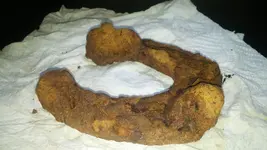
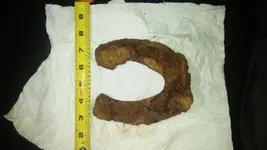
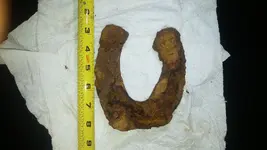
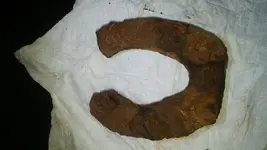
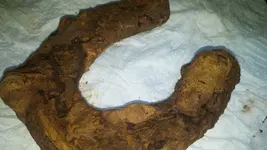
Background:: The horseshoe was found in Seekonk, Massachusetts U.S.A . The area has rich colonial milling history dating back to the mid 1600's. The property I found the item on shows no settlements according to maps I have viewed which are dated at 1755. The entire area is a large swamp and impossible to traverse in any season but winter due to water level and sink holes.
So my question is, Which time period does this hunk of cast iron hail from?
(Also it seems as though the swamp has preserved much of the organic material. You cannot see from the photographs but there is some straw or hair molded to the edges. I cleaned it up the best I could but much of the metal was starting to break off so I decided to leave it alone.)





Amazon Forum Fav 👍
Upvote
3


